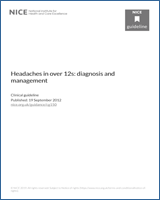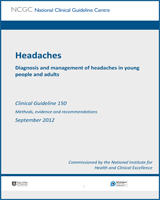Clinical
One study with 64 people with suspected medication overuse headache suggested that prophylactic treatment may be more clinically effective than withdrawal treatment in reducing the number of headache days at 3 months follow-up, but there is some uncertainty. [Very low quality].
One study with 64 people with suspected medication overuse headache suggested that prophylactic treatment may be more clinically effective than withdrawal treatment in reducing the number of headache days at 12 months follow-up, but there is some uncertainty. [Very low quality].
One study with 64 people with suspected medication overuse headache suggested that prophylactic treatment may be more clinically effective than withdrawal treatment in improving the responder rate at 12 months follow-up, but there is some uncertainty. [Very low quality].
In one study with 64 people with suspected medication overuse headache, there is too much uncertainty to determine whether there is a difference between withdrawal treatment and prophylactic treatment in improving quality of life, assessed with the mental health component score of SF-12 at 12 months follow-up. [Very low quality].
One study with 64 people with suspected medication overuse headache suggested that prophylactic treatment may be more clinically effective than withdrawal treatment in improving the physical health component score of SF-12 from baseline at 12 months follow-up, but there is some uncertainty. [Very low quality].
One study with 64 people with suspected medication overuse headache suggested that withdrawal treatment may be more clinically effective than prophylactic treatment in reducing the use of acute medication at 3 months follow-up, but there is some uncertainty. [Very low quality].
One study with 64 people with suspected medication overuse headache suggested that withdrawal treatment may be more clinically effective than prophylactic treatment in reducing the use of acute medication at 12 months follow-up, but there is some uncertainty. [Very low quality].
No studies reported outcome data for relapse back to medication overuse headache, headache specific quality of life or resource use.


